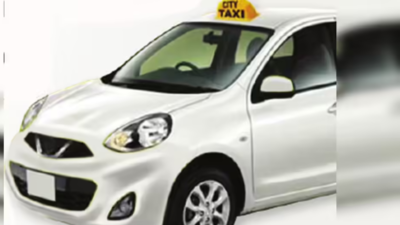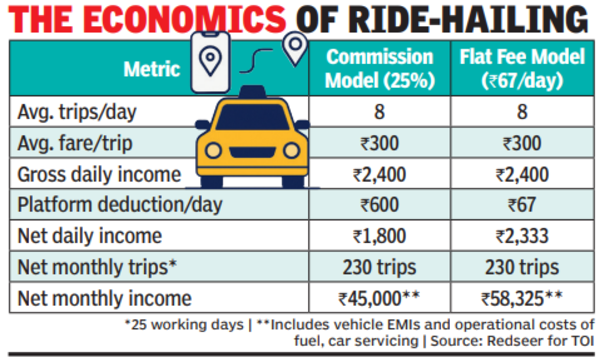
Bengaluru: Ola has introduced a nationwide flat fee model for its cab-hailing business, allowing drivers to retain 100% of their earnings after paying a fixed daily access charge of Rs 67. This move replaces the long-standing commission structure, where platforms deducted 20%-30% per trip, marking a significant shift in India’s ride-hailing economics.Internally, senior Ola executives acknowledge that the move is as much a response to intensifying market pressure as it is an attempt to win back disenchanted drivers. “Why Ola did this is because it is rapidly losing market share, and the network effect of supply and demand was waning for us. It’s a race to the bottom, a desperate hail mary. It will eat up margins,” one senior executive said. To make the math work, Ola has implemented sweeping cost cuts, shutting down its acquisition team that was 1,000 strong at its peak, reducing incentives, and relying more on automation. “We charged 20% commissions earlier, but nearly half of it went back to customer and driver incentives. In the flat fee model, we cut down incentives significantly and eliminated that cost base, making room for more tech-driven efficiency.,” another senior executive said.

According to Saurav Kumar Chachan, associate partner at RedSeer, India’s ride-hailing market is dominated by cabs, which account for roughly 50-55% of gross merchandise value (GMV), followed by auto rickshaws at about 35% and two-wheelers making up roughly 10-12%. In the top seven cities, average fares range from Rs 300-400 per trip, while in smaller cities, the average is closer to Rs 200-250. “Drivers in top metros typically complete about eight trips per day and work roughly 25 days a month, totalling around 220-240 trips per month,” Chachan said.At an average fare of Rs 300 per trip, this translates to gross earnings of roughly Rs 2,400 per day or Rs 60,000 per month. Under the traditional 25% commission model, that meant a net income of roughly Rs 1,800 per day and Rs 45,000 per month for the driver. Under the new Rs 67 a day flat fee structure, net earnings rise to roughly Rs 2,333 per day and Rs 58,325 per month.While the shift improves earnings potential for experienced drivers, it also shifts more risk to their side. “Flat fee ride-hailing models promise drivers full control over earnings, but also shift financial risk away from platforms,” said Pratik Shah, partner at EY Parthenon. “For experienced drivers in high-demand areas, it can yield higher take-home pay. But for newcomers or those in low-traffic zones, it may feel more like exposure than empowerment.“Flat-fee pricing has had mixed results globally.














